Why Does Grindelwald Have a Creepy Skull?
In a promotional clip for Fantastic Beasts: The Crimes of Grindelwald, we catch a glimpse of an artifact that may prove to be very significant indeed. The video, which circulated a few days before the official Crimes of Grindelwald trailer was released, shows an engraved skull glowing with orange light. A closer look at the engravings on the skull reveals the words “for the greater good” written in German, and the wand resting on those words is definitely the Elder Wand. Clearly, the skull belongs to Gellert Grindelwald. Having a mysterious skull seems to particularly suit Grindelwald, whose highest aim in life is to become master of death.
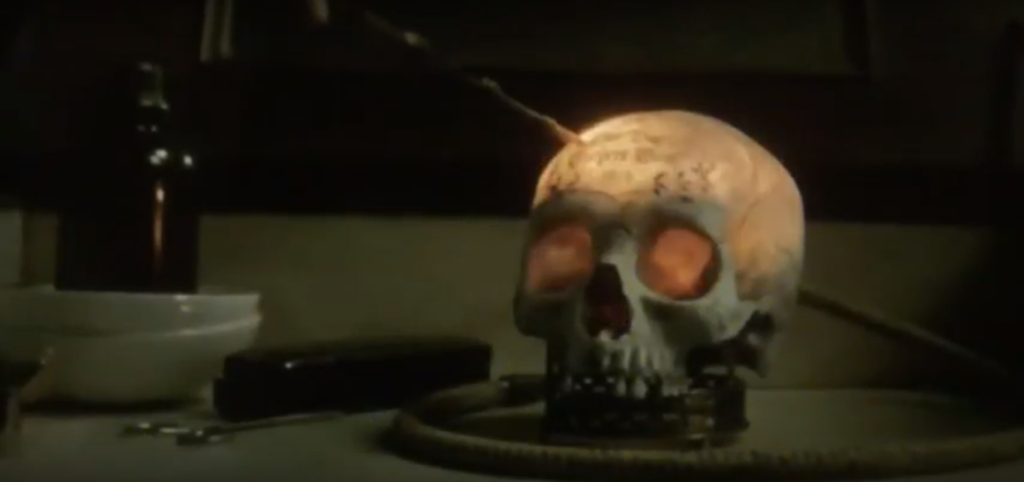
This is not the first time we have seen such imagery. As a few fans have pointed out, in the Hogwarts Library book The Tales of Beedle the Bard, the illustration above “The Tale of the Three Brothers” shows the Elder Wand resting against a skull in a similar fashion. The skull seems to represent Death guarding the three Deathly Hallows; it is also whole while the skull in the promotional clip is missing its jaw.
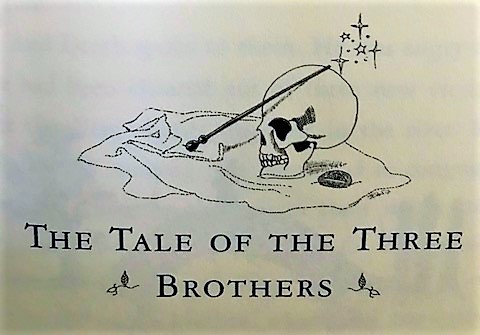
The skull in the clip is sitting on a metal platform of some sort, which appears to be connected to the long hose or tube lying on the work table. The apparatus is reminiscent of another image of a skull, seen at the top of the cover art for the Crimes of Grindelwald screenplay, which features a ribbon of gold coming from the bottom of the skull, curling around it, and ending in a pointed tip. The tube or hose seems to emerge from behind the skull, curl around it from right to left, and end in a black tip. If the two images really are linked, this skull could prove to be of great significance to the plot.


In many cultures, skulls are symbols of death and mortality, as well as of the defiance of death. Many early tombstones and monuments in Europe and old New England were carved with winged skulls to represent death. The illustration of Ignotus Peverell’s grave in “The Tale of the Three Brothers” shows a tombstone carved with a winged skull on top.
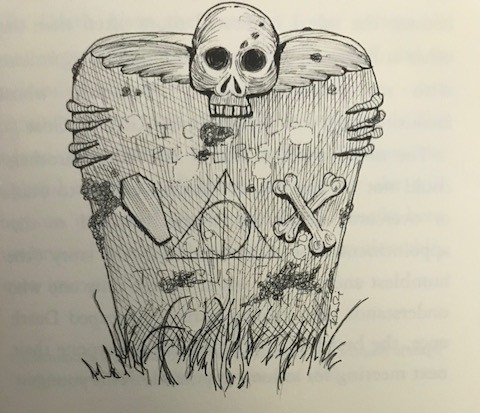
A skull without its lower jaw is often depicted in the skull and crossbones symbol associated with pirates. The skull and crossbones was also adopted by the German military at various points throughout the 19th and 20th centuries. The Fantastic Beasts series takes place between 1927 and 1945 and encompasses World War II and the years leading up to it. Grindelwald’s efforts to destroy Muggles and achieve wizarding domination seemingly parallel the rise and fall of the Nazi Party, which adopted the skull and crossbones as a military symbol. Grindelwald’s possession of this engraved skull seems to strengthen that connection as well as indicate his fascination with death and the Deathly Hallows.
Skulls also have many connections to the practice of magic, most notably to necromancy but also to divination. Human skulls are used for divination across many cultures; they are used as oracles from which prophecies and future predictions can be derived. It is possible that Grindelwald’s skull performs a similar function, drawing on those ancient magical traditions. In the full Crimes of Grindelwald trailer, one brief shot shows Grindelwald gazing, seemingly stunned, at an enlarged projection of Credence’s face while the voiceover in the background (possibly Dumbledore’s voice) proclaims that “Grindelwald had a vision… that he would rise to dominance over the wizarding world.”
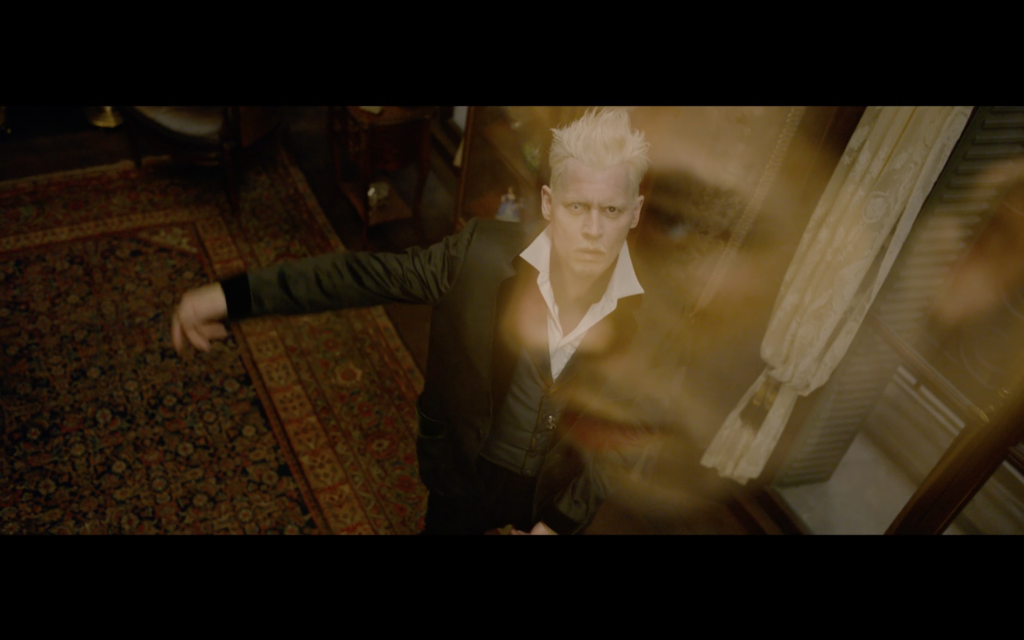
The vision of Credence’s face seems to glow with the same orange light emanating from the skull in the clip when it is touched by the Elder Wand. Is the skull an oracle showing Grindelwald this vision? Perhaps the skull is also responsible for the vision of a “child’s immense power” that Grindelwald described to Credence while disguised as Graves. When asked whether Grindelwald was a Seer or whether he was lying to Credence, J.K. Rowling tweeted, “He is a Seer AND he was lying.” Perhaps Grindelwald is not a true Seer like Trelawney but receives visions from the skull.
The human skull also has significance to the practice of alchemy as, among other things, a symbol of persistence after death. Alchemy has many branches, but common themes among all practices include the pursuit of knowledge, purity, perfection, and transcendence of the mundane. In their youth, Dumbledore and Grindelwald were intent on testing the limits of magical power and possibility. They bonded over their shared quest for knowledge, truth, power, and a perfect world; perhaps this pursuit led them both to dabble in alchemy and divination alongside their quest for the Deathly Hallows.
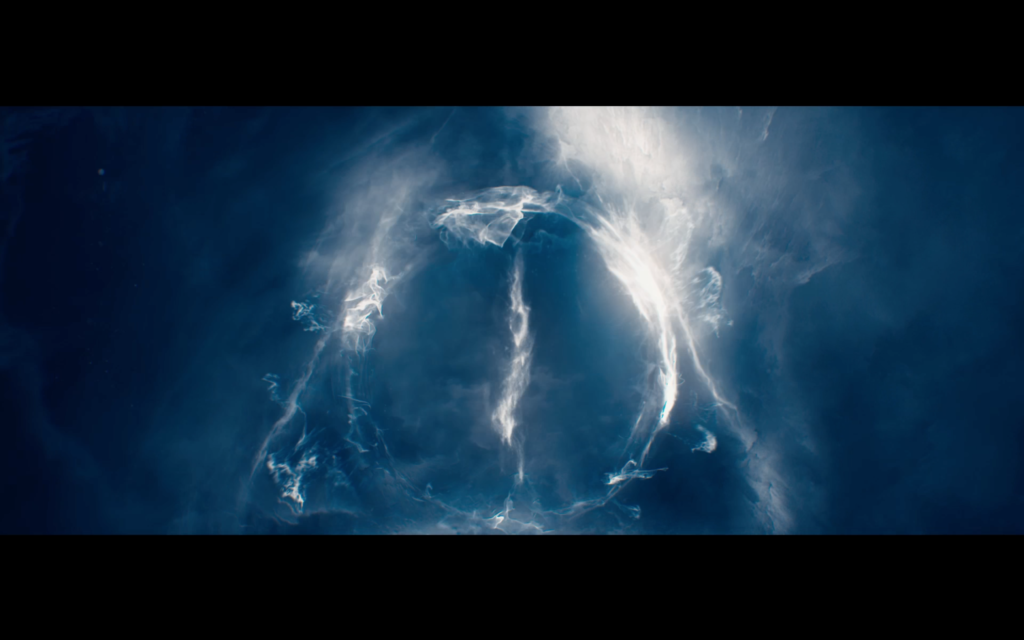
Now, Grindelwald devotes his life to pursuing power over death and using that power to reshape the world according to his views. He continues to seek knowledge, purity, and perfection, and perhaps those desires were aided by Dumbledore and still reside in some dark corner of Dumbledore’s heart. We’ll have to wait a few more months to know for sure, but it looks like this skull may well play an important role in Grindelwald’s quest for wizarding domination.

